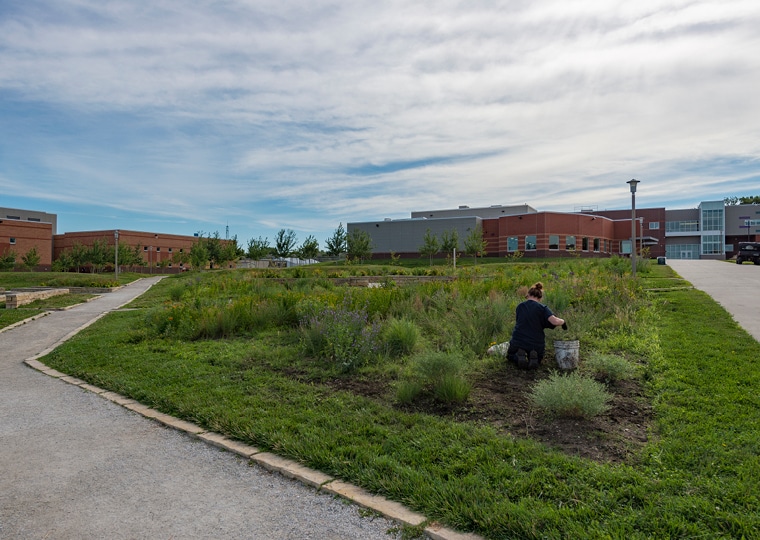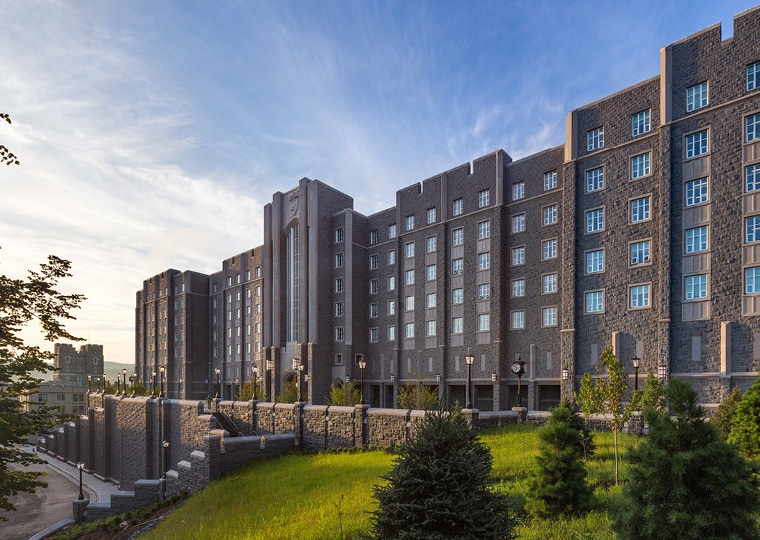Technology has been used to enhance the efficiency of architectural design for many years. In Smart Homes, residents can control doorbells, locks, thermostats, lights, outlets, voice assistants, and other devices through automated systems to live more safely and efficiently.
One way to think about a jail is as a home, for shorter or longer periods of time. As such, bringing the best features of advanced technology into correctional facilities can produce similar benefits as it does in a home. A Smart Jail can provide safety, operational efficiency, and opportunities for healing and recovery for both people in custody and staff.
Perhaps the most obvious use of “smart” technology in a jail is to make the building more secure. The use of cameras for supervision is a given, but advanced technology allows us to reduce the quantity and visibility of cameras, granting safety for people in custody and staff while being as unobtrusive as possible. Similarly, advanced technology for staff tours and access cards facilitates the integration of security features into the building’s architecture. This reduces opportunities for vandalism, as pieces of technology are not only less accessible but also less noticeable. Moreover, it makes security features appear less intrusive and reduces the impression of surveillance for those in custody.
Technology can also improve operational efficiency within a jail. Among the myriad of available technologies, radio-frequency identification (RFID) is already being used in modern jails. RFID wristbands allow staff to move about the building without weighty and onerous sets of keys. Moreover, they limit the need for officer escorts by often strained staff. With RFID wristbands, the level of access to different spaces can be customized by the individual. Officers are then able to monitor detainees’ locations and track their movements without having to escort them around the building. Fingerprint, facial recognition, and other biometrics technology can further support RFID, allowing for seamless and contactless movement through the building with doors opening (or not) based on permissions. For people in custody, this kind of technology allows them to capture a sense of dignity by moving between spaces on their own. Moreover, it grants a robust recording of any incident, including the context of who was present and who was not. Finally, RFID technology can also be used to ensure staff have completed their duties, notably for routine bed/cell checks as well as suicide watch.
The use of technology supports STV’s humane approach to detention center design. We want to create environments that promote healing, redirect lives, and create positive outcomes. In support of this mission, electronic devices such as tablets can play a crucial role in bettering the experience and treatment of persons in custody. While many may think of tablets primarily as entertainment devices, for persons in custody, they can be much more. In a correctional setting, a tablet may be used to administer video visitation and communication with families, conduct medical and legal research, manage release planning, pursue educational pathways, and order from commissary. While access must be monitored and content controlled, tablets offer a unique opportunity to provide people in custody with a level of agency and autonomy to better themselves.
STV’s justice team has spearheaded best practices in the design of humane justice facilities for decades. Our holistic design approach works from the inside out, building upon a fundamental understanding of how the building operates. Technology is never an afterthought in our planning process. Instead, our Day One planning for any application of technology provides a flexible infrastructure to accommodate changes in technology over the life cycle of a building. As part of a multidisciplinary professional services firm, our justice team can rely on a depth of resources in-house to support our humane approach that considers resident, visitor, and staff experience throughout the design process.
The most recent example of our expertise in justice design is on display in Baltimore, where we are currently designing a new Baltimore Therapeutic Treatment Center for the Maryland Department of General Services. Together with this client, we aim to create a national model for a transformative detention center that provides humane, sustainable, treatment-focused care for detainees as well as a safe, uplifting, positive work environment for staff. Integrated Smart Jail technology solutions will be an important component in meeting this goal.








